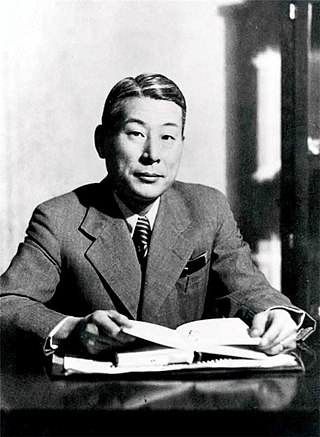
Chiune Sugihara was a Japanese diplomat who served as vice-consul for the Japanese Empire in Kaunas, Lithuania. During the Second World War, Sugihara helped thousands of Jews flee Europe by issuing transit visas to them so that they could travel through Japanese territory, risking his career and the lives of his family. The fleeing Jews were refugees from German-occupied Western Poland and Soviet-occupied Eastern Poland, as well as residents of Lithuania.
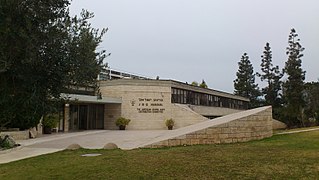
American Jewish Joint Distribution Committee, also known as Joint or JDC, is a Jewish relief organization based in New York City. Since 1914 the organisation has supported Jewish people living in Israel and throughout the world. The organization is active in more than 70 countries.
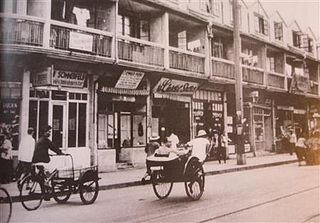
The Shanghai Ghetto, formally known as the Restricted Sector for Stateless Refugees, was an area of approximately one square mile (2.6 km2) in the Hongkou district of Japanese-occupied Shanghai. The area included the community around the Ohel Moshe Synagogue. Shanghai was notable for a long period as the only place in the world that unconditionally offered refuge for Jews escaping from the Nazis. After the Japanese occupied all of Shanghai in 1941, the Japanese army forced about 23,000 of the city's Jewish refugees to be restricted or relocated to the Shanghai Ghetto from 1941 to 1945 by the Proclamation Concerning Restriction of Residence and Business of Stateless Refugees. It was one of the poorest and most crowded areas of the city. Local Jewish families and American Jewish charities aided them with shelter, food, and clothing. The Japanese authorities increasingly stepped up restrictions, surrounded the ghetto with barbed wire, and the local Chinese residents, whose living conditions were often as bad, did not leave. By 21 August 1941, the Japanese government closed Shanghai to Jewish immigration.
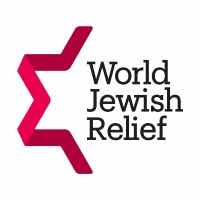
The Central British Fund for World Jewish Relief, formerly Central British Fund for German Jewry, (CBF) which currently operates under the name World Jewish Relief (WJR), is a British charitable organisation and the main Jewish overseas aid organisation in the United Kingdom.
Abraham Judah Klausner was a Reform rabbi and United States Army captain and chaplain who became a “father figure” for the more than 30,000 emaciated survivors found at Dachau Concentration Camp, 10 miles (16 km) northwest of Munich, shortly after it was liberated on April 29, 1945. He also cared for thousands more left homeless in camps as the victorious Allied Forces determined where they should go.
Moses W. Beckelman was a social worker from New York City. He began his career with the American Jewish Joint Distribution Committee in 1939, becoming its director-general in 1951.
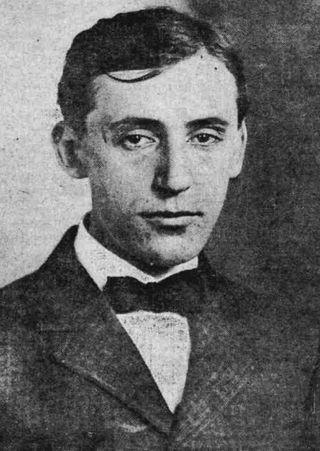
Rabbi Jonah Bondi Wise was an American Rabbi and leader of the Reform Judaism movement, who served for over thirty years as rabbi of the Central Synagogue in Manhattan and was a founder of the United Jewish Appeal, serving as its chairman from its creation in 1939 until 1958.
The National Refugee Service (NRS) was a refugee aid organization founded in New York City on 15 May 1939 to assist refugees from Europe fleeing Nazi persecution. It represented a reorganization of a predecessor organization, the National Coordinating Committee for Aid to Refugees and Emigrants Coming from Germany (NCC), which had been in operation since 1934 as an umbrella organization of refugee aid agencies.p. 364-365 The National Refugee Service remained in existence until August 1946, when it merged with the Service for Foreign Born of the National Council of Jewish Women to form the new organization United Service for New Americans.
Cecila Davidson Razovsky was a Jewish American social worker and activist for immigrants in the US.
Sylvia K. Hassenfeld was an American communal leader, philanthropist, human rights advocate, and one of the first women to head a major international Jewish aid organization.

Between 1933 and 1945, a large number of Jews emigrated from Nazi Germany and German-occupied Europe. This exodus was triggered by the militaristic antisemitism perpetrated by the Nazi Party and by Germany's collaborators, ultimately culminating in the Holocaust. However, even before the genocide itself, which began during World War II, the Nazis had widely sponsored or enforced discriminatory practices—by legislation, in many cases—against Jewish residents, such as through the Nazi boycott of Jewish-owned businesses. Although Adolf Hitler and the German government were initially accepting of voluntary Jewish emigration from the country, it became difficult to find new host countries, particularly as the 1930s were marked by the Great Depression, as the number of Jewish migrants increased. Eventually, the Nazis forbade emigration; the Jews who remained in Germany or in German-occupied territory by this point were either murdered in the ghettos or relocated to be systematically exploited and murdered at dedicated concentration camps and extermination camps throughout the European continent.
Joseph Charlap Hyman (1899 – February 10, 1949) was an American attorney, social worker, and philanthropist. He was born in New York, to Abraham Chaim Charlap, a member of the Sephardic rabbinical dynasty of Gedaliah ibn Yahya ben Joseph and a noted author and publisher of Hebrew texts and their English translations.
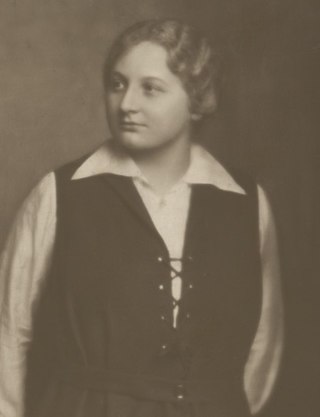
Anitta Müller-Cohen born Rosenzweig (1890–1962) was an Austrian-born Jewish woman who emigrated to Tel Aviv, Mandatory Palestine, in 1935. In Austria, she was a prominent social worker, politician and writer who became increasingly interested in Zionism. One of the leading members of Vienna's Jewish National Party, she organized and actively contributed to the First World Congress of Jewish Women which was held in Vienna in May 1923. At the American Jewish Congress in Chicago in 1925, she addressed the opening session. After emigrating to Palestine in 1935, she became a member of the Mizrahi Women's Organization, founded the Women's Social Service, and continued her welfare work which was mainly concerned with children and immigrants.

The Jewish Transmigration Bureau was a relief agency created by the American Jewish Joint Distribution Committee (JDC) in the early years of World War II to provide funds for the emigration of Jews from European countries where they faced persecution. From 1940-56, the Bureau received donations from tens of thousands of American donors to cover the travel costs of prospective emigrants. These funds allowed Jewish beneficiaries from Germany, Austria, Czechoslovakia, the Netherlands, Belgium and Luxembourg to settle in over 40 countries in Western Europe, the Americas, the Middle East, and Asia. "Deposit cards," thousands of which are extant and publicly searchable, link the names of emigrants with the depositor who provided the funds to cover the cost of their relocation.
Paul Baerwald was a German-born Jewish-American banker and philanthropist.
Solomon Lowenstein was an American rabbi, social worker, and philanthropist.
Morris Carlton Troper was a Jewish-American accountant from New York City credited for saving hundreds of Jewish refugees during World War II.
Malben was an agency for the care of aged, weak, and disabled immigrants in Israel. Created in 1949 by the efforts of the American Jewish Joint Distribution Committee (JDC) and the United Jewish Appeal (UJA), it operated until 1975, when all its facilities and programs were transferred to the Israeli government and local authorities.

Bernard Cantor was an American-born, Reform rabbi with experience in social work who volunteered to work as an emissary for the American Jewish Joint Distribution Committee in Poland and the Ukraine following World War I and the Russian Revolution, providing relief to Jewish communities there, until he was murdered along with his colleague, Dr. Israel Friedlander, while on a philanthropic mission.
Charles Harold Jordan was an American Jewish humanitarian who worked as the executive vice president for the American Jewish Joint Distribution Committee until his death.









